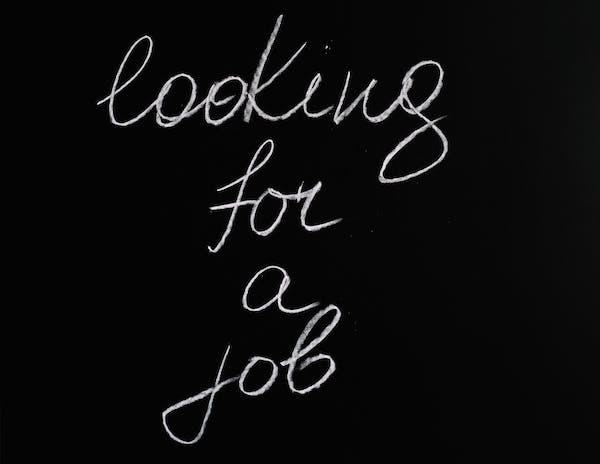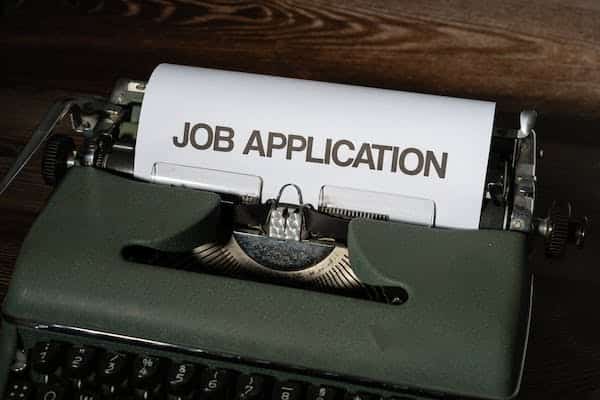Youth Writing Application Letter For Employment

Application Letter For Employment
Youth and application letter for employment is a critical issue in many countries, and the application process can be daunting for young people who are just starting their careers. One of the essential components of applying for a job is crafting a compelling application letter. An application letter is your opportunity to introduce yourself to the employer and highlight your skills, experience, and qualifications.
It is essential to understand the employment landscape for youth to craft an effective application letter. Many employers are looking for candidates who have some experience and can demonstrate their skills and abilities. Young people who are just starting their careers may not have a lot of work experience, but they can highlight their education, volunteer work, and extracurricular activities.
Key Takeaways
- Understanding the employment landscape for youth is critical to crafting an effective application letter.
- A well-crafted application letter can help young people overcome their lack of work experience.
- Tailoring the letter to the industry and avoiding common mistakes can increase the chances of getting an interview.
Understanding the Employment Landscape for Youth
Finding employment as a young person can be challenging. Youth employment rates in the summer have hovered at or near a sixty-year low in the United States [1]. The term “youth” refers to individuals between the ages of 16 to 24 [1]. Unemployment also impacts communities, as unemployed individuals are unable to contribute to public taxes, lowering a community’s tax base [1].
There are rules and regulations for youth employment. According to the Fair Labor Standards Act (FLSA), youth must be 14 years old or older to hold a nonagricultural position [2]. Youth 18 years or older may perform any job, whether hazardous or not, for unlimited hours [2]. Youth 16 or 17 years old may perform any nonhazardous job for unlimited hours [2].
Career exploration and skill development are important for youth seeking employment. A professional, such as a counselor at a high school, trade or vocational school, college, or career training center, can help in selecting an appropriate assessment, interpreting the results, and providing career counseling [3]. It is also important for youth to develop soft skills, such as communication, teamwork, and problem-solving, which are highly valued by employers [1].
In order to increase the chances of success in the job market, youth should also consider gaining work experience early on. Early work experience is generally associated with better future employment outcomes, potentially because it provides an opportunity to develop skills, network, and gain references [4]. Programs that provide work experience, such as internships, apprenticeships, and summer jobs, can be beneficial for youth seeking employment [1].
Overall, understanding the employment landscape for youth is important for both individuals and communities. By following rules and regulations, seeking career exploration and skill development, and gaining work experience, youth can increase their chances of success in the job market.
[1] https://www.povertyactionlab.org/evaluation/letters-recommendation-youth-employment-united-states [2] https://youth.gov/youth-topics/youth-employment/rules-and-regulations-youth-employment [3] https://youth.gov/youth-topics/youth-employment/career-exploration-and-skill-development [4] https://files.eric.ed.gov/fulltext/ED621432.pdf
Crafting Your Application Letter
When it comes to applying for a youth worker position, crafting an application letter that stands out from the rest is crucial. Here are some key tips to help you create a compelling letter that showcases your skills and experiences.
Analyzing the Job Description
Before writing your application letter, it is important to carefully read and analyze the job description. This will help you understand the specific skills and experiences that the employer is looking for in a candidate. Once you have a clear understanding of the job requirements, you can tailor your letter to highlight how your skills and experiences align with the position.
Showcasing Your Skills and Experiences
When crafting your application letter, it is important to showcase your relevant skills and experiences. This can be done by using specific examples from your past work or volunteer experiences. Be sure to highlight any experience you have working with youth, as well as any relevant training or certifications you may have.
Conveying Passion and Potential
In addition to showcasing your skills and experiences, it is important to convey your passion and potential for the position. This can be done by highlighting any personal qualities or values that align with the organization’s mission or values. Additionally, you can express your enthusiasm for the position and your eagerness to contribute to the organization’s goals.
By carefully analyzing the job description, showcasing your relevant skills and experiences, and conveying your passion and potential, you can create an application letter that stands out from the rest and demonstrates your suitability for the position.
Structuring Your Application Letter
When it comes to writing an application letter for a youth worker position, it’s important to structure the letter in a way that is both professional and engaging. The following subsections will outline the key elements of an effective application letter.
Opening Statement
The opening statement of an application letter should be attention-grabbing and clearly state the purpose of the letter. This is a chance to make a positive first impression and demonstrate enthusiasm for the position. It’s recommended to address the letter to a specific person, such as the hiring manager or recruiter. This shows that the applicant has done their research and is genuinely interested in the position.
Body of the Letter
The body of the letter should expand on the opening statement and provide more detail about the applicant’s qualifications and experience. It’s important to tailor the content of the letter to the specific requirements of the job posting. This shows that the applicant has carefully read the posting and understands what the employer is looking for. The applicant should highlight relevant skills and experience, and provide specific examples to demonstrate their suitability for the position.
Closing and Call to Action
The closing of the letter should reiterate the applicant’s interest in the position and thank the employer for considering their application. It’s also important to include a call to action, such as requesting an interview or offering to provide additional information. This shows that the applicant is proactive and eager to take the next step in the hiring process.
Overall, structuring an application letter for a youth worker position requires careful attention to detail and a focus on the employer’s needs. By following these guidelines, applicants can increase their chances of standing out from the competition and landing their dream job.
Tailoring the Letter to the Industry
When applying for a job, it’s important to tailor your cover letter to the specific industry you’re applying for. This will help you stand out from other applicants and show that you have a good understanding of the industry. Here are some tips for tailoring your letter to different industries:
Corporate Sector
The corporate sector is known for its formal and professional environment. When writing a cover letter for a job in the corporate sector, it’s important to use a formal tone and language. The letter should be concise, well-structured, and include relevant keywords. Applicants should highlight their achievements, skills, and experience that are relevant to the job position. Additionally, applicants should research the company and show their understanding of the company’s values and goals.
Non-Profit Sector
The non-profit sector is known for its mission-driven work and commitment to social causes. When writing a cover letter for a job in the non-profit sector, applicants should demonstrate their passion for the cause and their ability to make a positive impact. The letter should be concise, well-structured, and include relevant keywords. Additionally, applicants should research the organization and show their understanding of the organization’s mission and values.
Creative Industries
The creative industries are known for their innovation, creativity, and artistic flair. When writing a cover letter for a job in the creative industries, applicants should demonstrate their creativity and passion for the industry. The letter should be visually appealing, well-structured, and include relevant keywords. Additionally, applicants should showcase their portfolio and highlight their achievements and experience that are relevant to the job position.
Tech Industry
The tech industry is known for its fast-paced and dynamic environment. When writing a cover letter for a job in the tech industry, applicants should demonstrate their technical skills and their ability to adapt to changes. The letter should be concise, well-structured, and include relevant keywords. Additionally, applicants should showcase their technical expertise and highlight their achievements and experience that are relevant to the job position.
Common Mistakes to Avoid in Application Letters
When it comes to job hunting, an application letter for employment is often the first impression a potential employer will have of a candidate. Therefore, it is crucial to make sure that the application letter is free of any mistakes that could hurt a candidate’s chances of getting the job. Here are some common mistakes to avoid in application letters:
1. Failing to Address the Hiring Manager by Name
One of the most common mistakes in application letters is failing to address the hiring manager by name. Candidates should take the time to research the company and find out the name of the person who will be reviewing their application. Addressing the hiring manager by name shows that the candidate has done their homework and is genuinely interested in the position.
2. Not Tailoring the Letter to the Job
Another common mistake is not tailoring the letter to the job. Candidates should avoid sending out generic application letters that do not specifically address the requirements of the job. Instead, they should take the time to read the job description carefully and highlight their relevant skills and experience.
3. Including Irrelevant Information
Candidates should avoid including irrelevant information in their application letters. For example, they should not discuss personal hobbies or unrelated work experience. Instead, they should focus on highlighting their relevant skills and experience that make them the best fit for the job.
4. Failing to Proofread
Finally, candidates should always proofread their application letters before sending them out. Spelling and grammar errors can make a candidate appear careless and unprofessional. Therefore, candidates should take the time to carefully review their application letters and make sure that they are free of any mistakes.
By avoiding these common mistakes, candidates can increase their chances of getting the job they want.
Following Up After Sending Application Letter for Employment
After submitting a application letter for employment, it’s important to follow up with the employer to show continued interest in the position. According to Indeed, it’s generally appropriate to send a follow-up email one to two weeks after submitting the application, unless the job posting has indicated a specific timeline for the hiring process.
When following up, it’s important to keep the email short and to the point. In the email, the applicant should reference the job posting and express continued interest in the position. The email should also include a request for an update on the status of the application.
It’s important to note that following up too frequently or aggressively can be off-putting to employers. The Balance recommends waiting at least a week after the initial follow-up email before sending another one.
In addition to email, applicants can also follow up with a phone call. However, it’s important to be mindful of the employer’s preferred method of communication. If the job posting specifically requests no phone calls, it’s best to stick to email follow-ups.
Overall, following up after submitting a job application is an important step in the job search process. It shows the employer that the applicant is interested and motivated, and can help keep the applicant’s name and qualifications at the forefront of the employer’s mind.

Additional Resources on Youth and Application letter for Employment
When it comes to finding a job, youth may face unique challenges that require additional resources and support. Fortunately, there are many resources available to help youth navigate the job market and develop the skills they need to succeed.
One great resource is CareerOneStop, a website that provides a range of career exploration help. This website offers up-to-date information on job salary and benefit information, as well as related education and training opportunities. Additionally, CareerOneStop can help youth identify their skills and interests and find careers that match their strengths.
Another useful resource is YouthGO, a program that strives to empower youth to be the next generation of conservation leaders. This program employs youth to protect, revitalize, and restore the environment and communities. It also educates youth about the environment and purposefully engages youth from all backgrounds.
For those seeking for application letter for employment of recommendation for youth employment, there are resources available as well. Poverty Action Lab provides letters of recommendation for youth employment in the United States. Research indicates that employment during adolescence and young adulthood affects employment and wages for decades. Early work experience is generally associated with better future employment outcomes, potentially because it helps youth build skills and confidence.
Finally, the Youth Employment Toolkit is a comprehensive guide to all youth employment interventions. The first edition of the Toolkit includes evidence on seven different kinds of intervention. This resource offers evidence-based guidance on how to design and implement effective youth employment programs.
